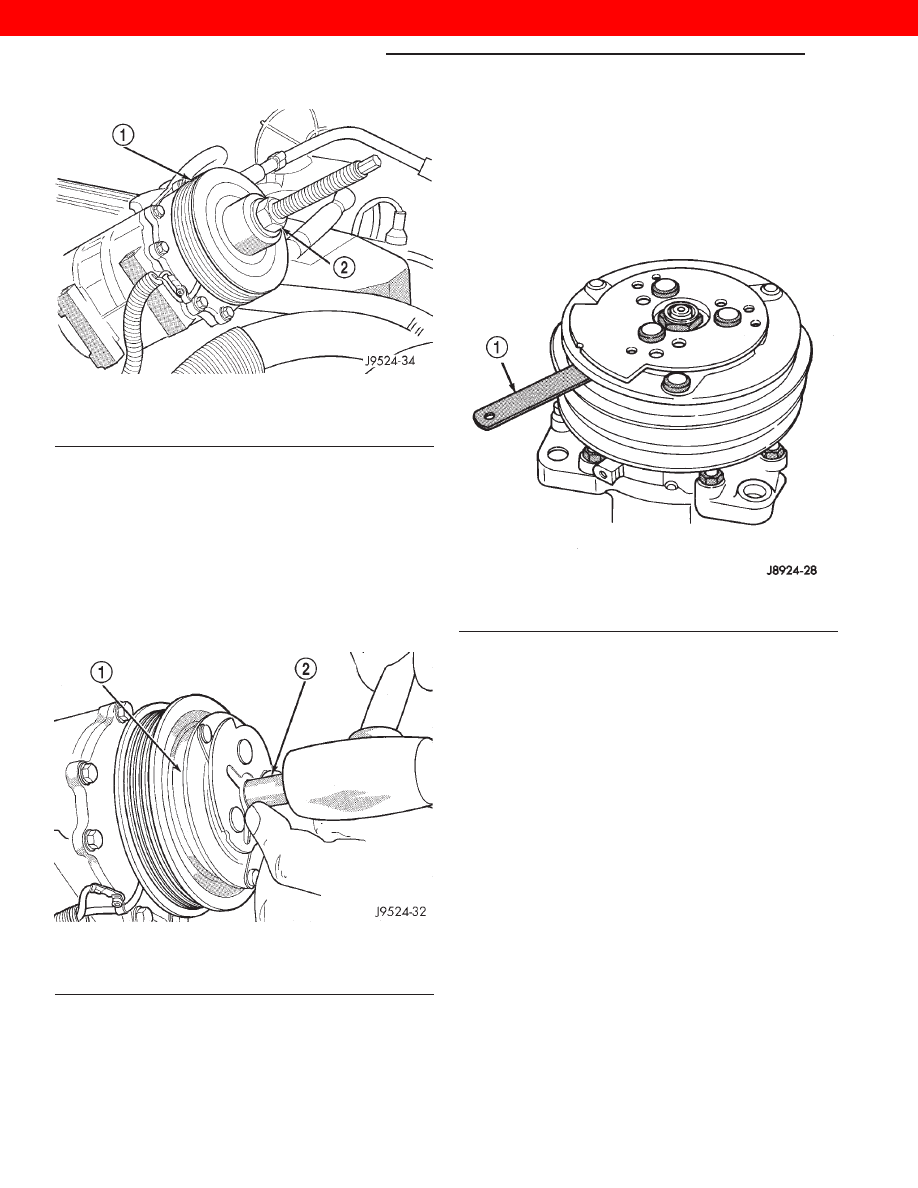Jeep XJ. Manual - part 521

CAUTION: If the snap ring is not fully seated in the
groove it will vibrate out, resulting in a clutch fail-
ure and severe damage to the front housing of the
compressor.
(6) Install the compressor shaft key and the origi-
nal clutch shims on the compressor shaft.
(7) Install the clutch plate with the driver (Special
Tool C-6463) (Fig. 15). Install the shaft hex nut and
tighten to 14.4 N·m (10.5 ft. lbs.).
(8) Check the clutch air gap with a feeler gauge
(Fig. 16). If the air gap does not meet the specifica-
tion, add or subtract shims as required. The air gap
specification is 0.41 to 0.79 millimeter (0.016 to 0.031
inch). If the air gap is not consistent around the cir-
cumference of the clutch, lightly pry up at the mini-
mum variations. Lightly tap down at the points of
maximum variation.
NOTE: The air gap is determined by the spacer
shims. When installing an original, or a new clutch
assembly, try the original shims first. When install-
ing a new clutch onto a compressor that previously
did not have a clutch, use 1.0, 0.50, and 0.13 milli-
meter (0.040, 0.020, and 0.005 inch) shims from the
clutch hardware package that is provided with the
new clutch.
(9) Reverse the remaining removal procedures to
complete the installation.
CLUTCH BREAK-IN
After a new compressor clutch has been installed,
cycle the compressor clutch approximately twenty
times (five seconds on, then five seconds off). During
this procedure, set the heater-A/C control to the
Recirculation Mode, the blower motor switch in the
highest speed position, and the engine speed at 1500
to 2000 rpm. This procedure (burnishing) will seat
the opposing friction surfaces and provide a higher
compressor clutch torque capability.
Fig. 14 Clutch Pulley Install
1 – PULLEY BEARING ASSEMBLY
2 – INSTALLER
Fig. 15 Clutch Plate Driver
1 – CLUTCH PLATE
2 – DRIVER
Fig. 16 Check Clutch Air Gap
1 – FEELER GAUGE
24 - 10
HEATING AND AIR CONDITIONING
XJ
REMOVAL AND INSTALLATION (Continued)
2000 JEEP CHEROKEE